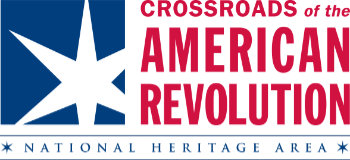Biography People
Thomas Brown Full Biography
I was born March 11, 1760 and was living at Forked River, Monmouth County (today Ocean County) when the Revolution broke out. Parts of Monmouth bordering on the sea, bays and rivers were immense tracts of forests and swamps. These areas became refuges for people who abandoned the rebel cause and fled to the British for refuge. They made incursions back to the settled areas to seize plunder that they delivered to British ships.
Early in the war my father, Samuel, was chosen captain of a company of 30 minutemen who held themselves continually ready to turn out at a moment’s warning to resist depredations by the Tories and refugees. I was sixteen and was the first volunteer listed on the company muster. The company was stationed at the mouth of Forked River, about a mile and a half from our home. My father also began building a heavy gunboat that the other privates in his company and I took turns working on and keeping watch over.
When a group of 300 Monmouth County Tories and refugees occupied Toms River, about twelve miles from us, we removed to a cedar swamp between the gunboat and Toms River. After they left we returned to our original station until spring 1777 when Patriot Captain Joshua Studson arrived at Forked River in a whaleboat outfitted as a gunboat. I was one of five men from our company who volunteered to serve with him. About April 1 we proceeded to sea through Barnegat Inlet and reached Sandy Hook. We passed the British frigate Roebuck and captured a British schooner in Amboy Bay and brought her into Middletown Creek in Monmouth County. Shortly after, a British force landed and attacked us in the night, retook the schooner, burned our boat and a mill at Middletown Point, then returned to their ships. We returned to our militia company and helped complete the gunboat at Forked River. In May 1777 we launched our gunboat, named The Civil Usage. She was armed with one long six-pounder cannon and six smaller guns. About thirty-six of us manned her and my father was captain. We were assigned to guard Barnegat Bay and Inlet to prevent the enemy from attacking through them.
In 1777 we captured a British brig bound to New York from the West Indies loaded with rum, sugar, molasses, and limes. We took her into Toms River, then continued to cruise on our station until severely cold weather set in. We ran our gunboat up Oyster Creek into a cedar swamp where we could protect her from Tories and refugees through the winter. In spring 1778, I was one of twelve men from our company who remained with our gunboat when the rest of the company marched to join General Daniel Morgan’s regiment of rifleman during the campaign that led to the Battle of Monmouth. We continued to guard the gunboat and do what we could to provide safety for the local Whigs. In June 1779 our gunboat required repair, so we ran her into harbor at Toms River.
After the Battle of Monmouth my father and our company returned and we continued cruising, capturing several enemy vessels trading with loyalists around Little Egg Harbor and Barnegat. During the winter we laid up the gunboat at Forked River. My father and I went to our home about twelve miles away and as the sun was rising the next morning the bark of our dog alarmed me and I saw a number of refugees fording a creek very near our house. I called to my father and we left the house and began to run across a large open field. The refugees fired on us, but we reached our gunboat at Toms River unhurt. However, the refugees robbed our house of everything of value, forced our family out, and then burned down the house, barn, shop and other outbuildings. They also burned my father’s valuable schooner.
We continued to cruise until fall when my father and I moved our family to Woodbridge and Dr. Aaron Swain took command of The Civil Usage, under my father’s direction. About March 1780 I was commissioned a lieutenant by the state to serve under Dr. Swain. I often commanded the boat during his frequent absences. We continued to cruise along the coast from Raritan River to Shrewsbury River to check on refugees and people trading with the enemy. In the spring of 1781, on the way to Barnegat Inlet, we captured a schooner containing plunder taken by refugees. We next worked with a Rhode Island privateer to capture and sink a refugee galley. The same year we worked with another gunboat and captured the British guard galley in Prince’s Bay and sent her into New Brunswick. We continued in service until peace was proclaimed. After the war I lived a long life on and near the water.
FURTHER SOURCES
Farner, Thomas P. New Jersey in History: Fighting to be Heard. Down The Shore Pub., 1996.
National Archives and Records Administration M804: Revolutionary War pension and bounty-land-warrant application files – Pension File R1346 for Thomas Brown – The main pension application statement is also printed in Dann, John C., ed. The Revolution Remembered: Eyewitness Accounts of the War for Independence. Chicago: University of Chicago Press, 1980.
